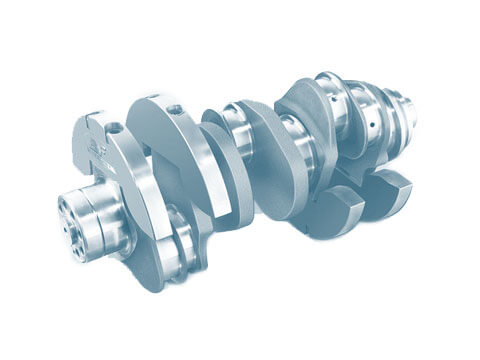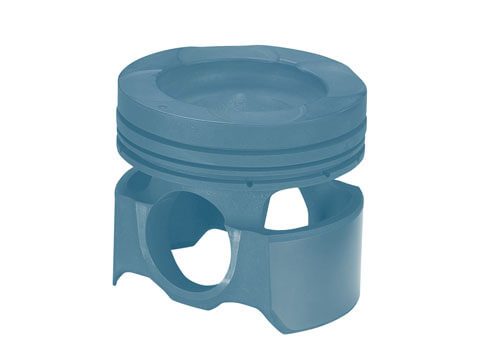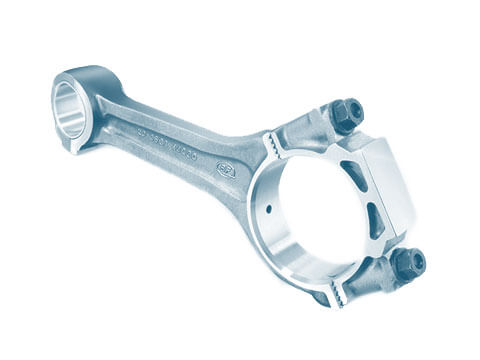Crankshaft drive
The crankshaft drive is the complete mechanism which converts the up and down movement of the piston in the engine into the rotary motion of the crankshaft.
Function
Function
The crankshaft drive transfers the power generated from the combustion of the fuel-air mixture via the pistons and the connecting rods to the crankshaft: the up and down movement of the piston is converted into a rotary motion of the crankshaft and a torque in the process.
The following elements are part of the crankshaft drive:
- Crankshaft with counterweights and crankshaft bearing
- Connecting rods and connecting-rod bearings
- Pistons with rings and piston pins
- Flywheel
Pistons
During the operating cycle of an internal combustion engine, the energy bound in the fuel is converted into heat and pressure in the cylinder in a very short space of time. This process is explosive in nature. In the cylinder, the piston is constantly moving up and down, and is responsible for converting the energy released during the combustion process into mechanical work.
Connecting Rod
The connecting rod creates the link between the piston and crankshaft and thus transmits power. It converts the linear up and down movement of the piston into the circular movement of the crankshaft.
Crankshaft
The crankshaft converts the linear movement of the pistons into a torque and transfers this to the flywheel.








